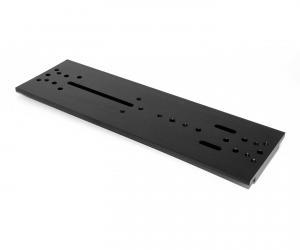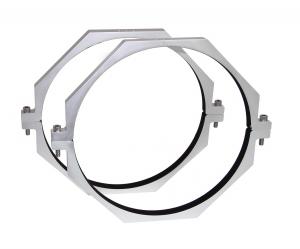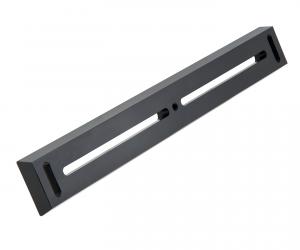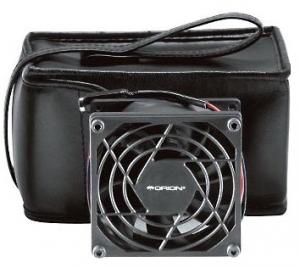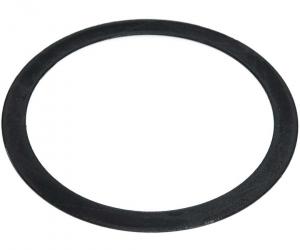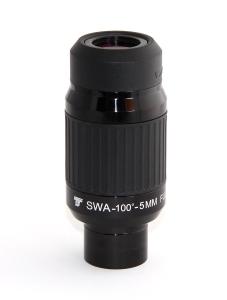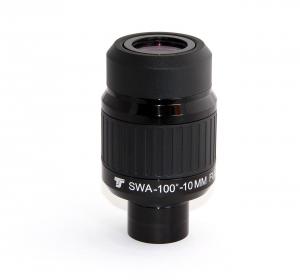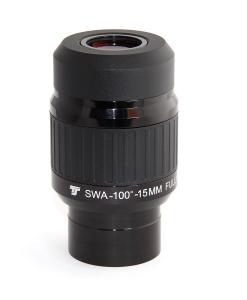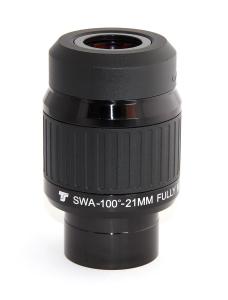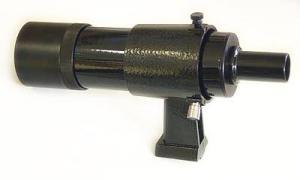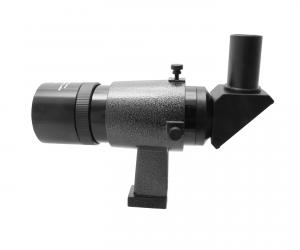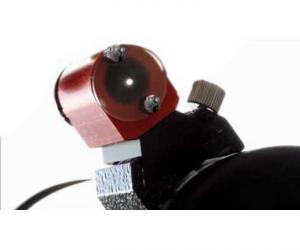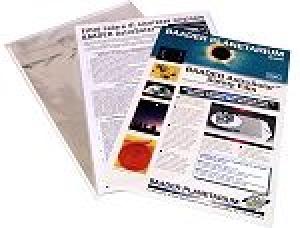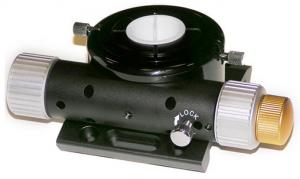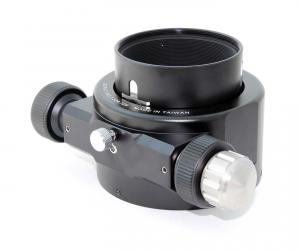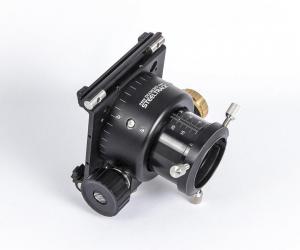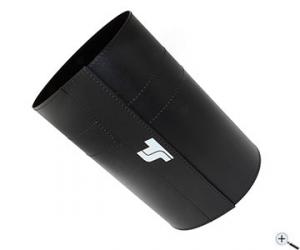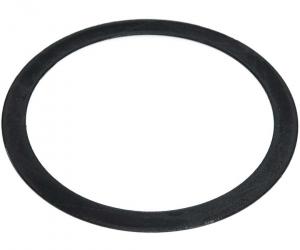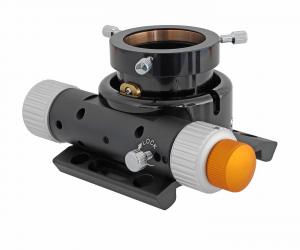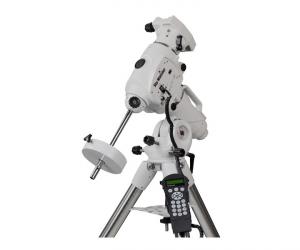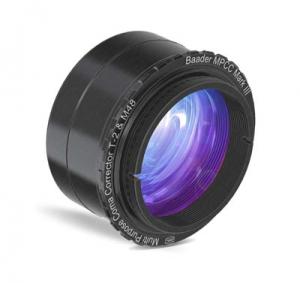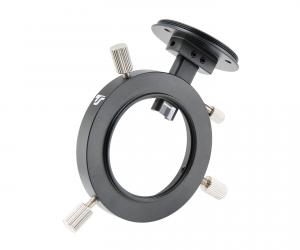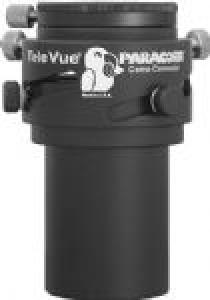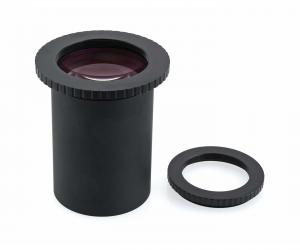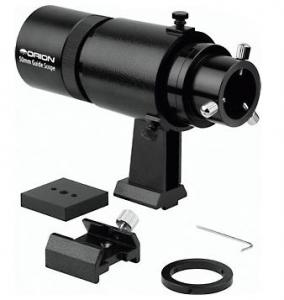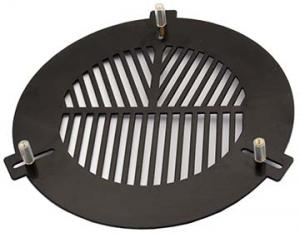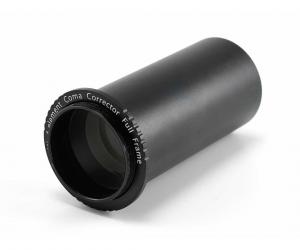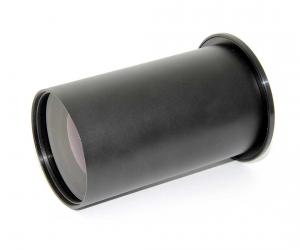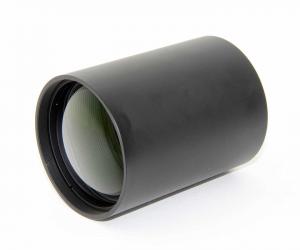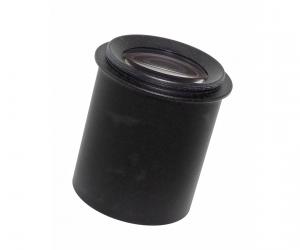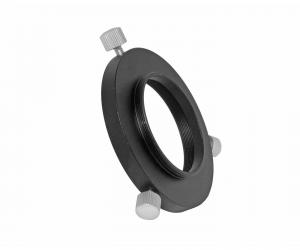- Telescopes
- Overview:
Telescopes - Achromatic Refractor
- Apochromatic Refractor
- Overview:
Apochromatic Refractor - ED Refractor - less color aberration than an achromatic
- SD APO - color free 2-element APO objective
- EDT APO - 3 element ED objective
- High End APO with 3-element APO objective - no color aberation
- Flatfield APO with flat field for Astrophotography
- All Apos and EDs from all manufacturers - large overview
- TS APO and ED from Japan with high quality optics
- Overview:
- Newtonian Telescopes
- Dobsonian Telescopes
- RC Ritchey Chretien Telescopes
- Casssegrain Telescopes
- Reflektor Telescopce with Lens Correcture
- Maksutov Cassegrain Telescopes
- GoTo Telescopes
- Solar Telescopes H-Alpha
- Overview:
- Mounts Tripods Rings Rails Power Supply ...
- Overview:
Mounts Tripods Rings Rails Power Supply ... - Mounts Equatorial with GoTo
- Mounts Equatorial without GoTo
- Mounts Azimutal with GoTo
- Mounts Azimutal without GoTo
- Mounts GoTo - Harmonic Drive
- Travel mounts for astro imaging
- Tripods Piers Polar Wedges
- Mount Control & Electronics
- Dovetail Clamps, Plates and Mount Adapters
- Tube Rings
- Power Supply
- Counterweights Balance Weights
- Mount Accessories - Other
- Overview:
- Telescope Accessories
- Overview:
Telescope Accessories - Eyepieces
- Barlows & Reducer Lenses
- Diagonal Mirrors and Prisms
- Binocular Viewers
- Finder Scopes
- Telescope Collimation and Test
- Cleaning Tools
- Transport and Storage
- Dust protection for Telescopes & Accessories
- Stray Light Protection
- Dewcaps and Heater
- Focusers, Adapters, Motorfocus
- Telescope DIY & Improvement
- Other telescope accessories
- Replacement Parts
- Overview:
- Filters
- Overview:
Filters - Color Filters and Color Filtersets
- Nebular Filters for Visual Observing
- Neutral-Density and Polfilter
- Photo Narrowband Nebular Filters
- Photo Broadband Filters
- Photo Planetary Filters
- Photo R-G-B and IR Cut Filters
- Photo - Filtersets
- Photometric Filters
- Clip Filter for DSLR Cameras
- Filter Wheels and Filterslider
- Solar Filters for white light
- Solarfilter for H-Alpha and Calcium
- Overview:
- Adaptors
- Overview:
Adaptors - Adapter 1,25" and 24,5mm
- Adapter 2"
- Adapter T2 - M42x0.75
- Adapter M48x0,75
- Adapter M54
- Adapter SC
- Adapter M63
- Adapter M68
- Adapter to other Threads
- Adapter Extensions
- Adapter camera bayonet
- Adapter Objective Filterthread
- Adapter Quick Changing , Rotation
- Adapter Eyepiece Projection
- Adapters Tilting
- Overview:
- Astrophotography and Photography
- Overview:
Astrophotography and Photography - Cooled Cameras
- Cameras without Cooling
- Deep-Sky Cameras uncooled
- Set-Offers Camera, Filter, Wheels
- Acessories for Cameras
- Travel mounts for astro imaging
- Imaging Correctors for Telescopes
- Autoguiding Cameras & Sets
- Everything for Guiding
- Focusing aids - Bahtinov mascs
- Flat Field foils and boxes
- Lenses for Cameras
- Piggyback Camera Holder
- Camera Bags, Photocases & more
- Digital Camera and Smartphone Adapter
- Other photo accessories
- Overview:
- Binoculars, Spotting Scopes, Microscopes, Range Finders
- Overview:
Binoculars, Spotting Scopes, Microscopes, Range Finders - Spotting Scopes and Acessories
- Roof Prism Binoculars
- Binoculars with Porro prisms
- Binoculars from 100mm Aperture
- Binoculars with 1,25 inch eyepieces
- TSMX APO Binoculars
- Binoculars for Astronomy
- Binoculars Hiking Bird watching
- Monoculars - Opera Binoculars
- Accessories for Binoculars
- Range Finders
- Microscopy
- Bags for Phototripods & Binoculars
- Overview:
- Phototripods and Binomounts
- Books, Software
- Overview:
Books, Software - Books for Astronomy Beginners
- Star Charts and Planispheres
- Books about our Solar System
- Observing Tips for Amateurs
- Popular Astronomy Literature
- Teaching material
- Astrophotography books
- Telescopes, Observatories, Construction
- Calendars Yearbooks
- Software, Star Charts
- Books for Microscopers
- Books Nature and Animals
- Nature Photography TimeLapse
- Overview:
- Night Vision, Magnifiers, Weather, Domes & more
- Beginner Astronomy and Gift Ideas
- Second Hand & Special Offers
- New products
Manufacturer: -TS Teleskope
Product number: ONTC8010
EUR1855.00new
EUR 1.855,00
incl. 19 % VAT (DE)
The VAT indicated refers to that applicable in Germany. After logging in, the VAT amount is adjusted to the applicable VAT of the stored delivery country. Therefore, the final price may vary accordingly.
excl. 13.95 € shipping costs (DE)
more details to the shipping costs ...Please log in to calculate shipping costs to your country.
There are no reviews for this product
- Details..
- Technical data..
- In the box..
- Reviews..
- Manufacturer infos..
- Safety informations..
ONTC Newtonian Telescopes from Teleskop Service are a unique system on the market
You choose the components and the bias of your telescope and get a Newtonian without compromises for reaching your astronomical goals. Just tell us what you want to do with the telescope and we make it according to your needs.The ONTC Newtonian with 203 mm aperture and 1000 mm focal length:
The strengths of this telescope is flexibility and transportability. Astrophotographers will appreciate the Newtonian for the good focal ratio of f/5. With suited correctors, the speed can be increased to f/3.5. But the telescope is also very good for moon and planets - it is a real allround telescope.
The advantages of the ONTC telescopes in short:
 TS "Black" anti-reflective paint for maximum contrast
TS "Black" anti-reflective paint for maximum contrastMany of our UNC and all ONTC Newtonian telescopes use the TS-Optics "Black" anti-reflective paint. It darkens the inside of the tube just as well as velour foil. The illustration shows how dark the anti-reflective paint is. The diagram (at the images at the top of this page) shows the direct comparison between the commonly used chalkboard paint and the anti-reflective paint.
Choose a suitable focuser in the "options" list
The free choice of the focuser makes the ONTC Newtonians unique. Thus you can easily adapt your new telescope optimally to your wishes. Please do not forget to select the base for attaching the focuser to the tube. You can choose from our whole range. A few recommendations are given below: UNCN2-G2 - TS 2" UNC Newtonian Crayford focuser - short
UNCN2-G2 - TS 2" UNC Newtonian Crayford focuser - shortEconomically priced 2" Crayford focuser for observing and photography with DSLR cameras. The short focuser needs only 75 mm optical path.
Item number of the necessary base: BAST-UNCN2G2 - please add to your order.
 FTF2008BCR - Starlight Feather Touch 2" focuser - 20 mm draw tube travel
FTF2008BCR - Starlight Feather Touch 2" focuser - 20 mm draw tube travelThe best 2" focuser we know, for maximal stability without compromises. In addition, the focuser is very short, together with the base, it is only 50 mm heigh.
Item number of the necessary base: BA20CL-230mm - please add to your order.
 Orion ACU-3S 3" Crayford focuser with M82x1 thread
Orion ACU-3S 3" Crayford focuser with M82x1 threadThe massive 3" focuser is our recommendation for astrophotographers who want to work with a 3" Newtonian corrector (N-AGK3, TS 3" Wynne or TeleVue VIP-3010.) These correctors are screwed to the M82 thread of the focuser.
Item number of the necessary base: NB240-ORACU3 - please add to your order.
We recommend three focus positions above the 2" tube of the focuser:
1. astrophotography with the standard coma correctors - 65 mm above the 2" tube (STANDARD Version)That version is optimized for the standard correctors like the TS coma corrector, the GPU corrector, the Baader MPCC or the ASA Quattro. For visual use, you need to add the 2" extension tube - Art.Nr. TSV235.
2. astrophotographic use with the ASA 2" Reducer/corrector - 90 mm above the 2" tube
That position is ideal for the use of the ASA Reducer/corrector ASA2KORRR. The reducer brings the system up from f/4.5 to f/3.3.
3. Visual use - 35 mm above 2" tube
We recommend that version for visual use of the telescope. For this telescope line, we recommend the 58 mm secondary mirror. The 2" Paracorr VIP-2010 also works fine with this focus position.
The focus positions are calculated and achieved by changing the primary mirrors position. Of course you can also get other positions if you want. For expample if you want to use a 3" coma corrector. The three we mentioned are the most common ones.
Further customizable parts of the ONTC Newtonian telescopes:
If you order the instrument via our webshop, you can send us a notice in the text field below the payment methods. There is a textfield "Informations concerning your order" where you can tell us what you want to have. The alternative is dropping us an email : info@teleskop-service.deRings or bar directly connected to the tube - no change of the price:
The scope of delivery also includes rings with a flat base on both sides. According to your wish, we can also attach a dovetail bar (Losmandy or Vixen style) directly to the tube. If choosing that modification, the tube gets additional fibre layers where necessary.Quality guarantee through optics test by TS:
After assembly, each Newtonian telescope is checked by our technicians to ensure that the optics and mechanics work together smoothly.Assembly and collimation instructions
The telescope is delivered disassembled into several units for safety. The assembly and adjustment are not complicated, you can download the instructions in advance. The PDF can be found here.Astrophotographic results obtained with this telescope on Astrobin
Here you can find some astrophotographs made with this telescope model: Link to AstrobinGeneral product video
Teleskop-Service has made an information video about the UNC and ONTC telescopes:| Aperture: | 203 mm / 8" |
| Focal length: | 1000 mm |
| Focal ratio: | f/5 |
| Primary mirror: | TS primary mirror - mirror substrate Pyrex |
| Secondary mirror: | 63 mm diameter minor axis - other sizes on request |
| Tube: | Carbon fibre foam sandwich - diameter 240 mm - wall thickness 5 mm |
| Focuser: | at customer´s request |
| Primary mirror cell: | 9 points - fully adjustable |
| Weight: | 6.5 kg to 8 kg (depending on focuser) |
| Length: | about 1000 mm (depends on the focusing position) |
Astrophotographic results obtained with this telescope on Astrobin
Here you can find some astrophotographs made with this telescope model: Link to Astrobin| Manufacturer / Importeur: | Teleskop-Service Ransburg GmbH |
| Street: | Von-Myra-Str. 8 |
| ZIP / City: | 85599 Parsdorf |
| Country: | germany |
| Telefon number: | +49 89 99228750 |
| Email: | info@teleskop-service.de |
| Website: | www.teleskop-express.de |
Safety informations: PDF Download
Recommended accessories
Accessories for mounts
Cleaning & Collimating
Customers who bought this product also bought...
TS-Optics Primary Mirror Fan for Newtonian telescopes
EUR 24,90RRP EUR 33,00you save 24.5% (EUR 8,10)
Eyepieces
TS-Optics SWA 100° Ultra-Series 5 mm 1.25" Xtreme Wide Angle Eyepiece
EUR 199,00RRP EUR 279,00you save 28.7% (EUR 80,00)
TS-Optics SWA 100° Ultra-Series 10 mm 1.25" Xtreme Wide Angle Eyepiece
EUR 199,00RRP EUR 279,00you save 28.7% (EUR 80,00)
TS-Optics SWA 100° Ultra-Series 15 mm 2" Xtreme Wide Angle Eyepiece
EUR 249,00RRP EUR 289,00you save 13.8% (EUR 40,00)
TS-Optics SWA 100° Ultra-Series 21 mm 2" Xtreme Wide Angle Eyepiece
EUR 209,00RRP EUR 289,00you save 27.7% (EUR 80,00)
Finder & Accessories
TS-Optics 8x50 Finder - straight view, black colour and with adjustable bracket
EUR 69,00RRP EUR 89,00you save 22.5% (EUR 20,00)
TS-Optics 8x50 Finder - with Bracket - black colour - 90° angled
EUR 98,00RRP EUR 109,00you save 10.1% (EUR 11,00)
General Accessories
Orion ACU-3S 3" Crayford Focuser with Dual-Speed-Transmission - short
EUR 384,90RRP EUR 466,00you save 17.4% (EUR 81,10)
TS-Optics flexible Dew Shield for tube diameter from 230 to 270 mm
EUR 52,90RRP EUR 59,00you save 10.3% (EUR 6,10)
TS-Optics Telecopes primary mirror baffle for 8" UNC and TS Photon Newtonian telescopes
EUR 44,00RRP EUR 49,00you save 10.2% (EUR 5,00)
Mounts
Photo Acessories
TS-Optics Off-Axis Guider TSOAG9 - Length only 9 mm
EUR 119,00RRP EUR 159,00you save 25.2% (EUR 40,00)
TeleVue VIP-2010 - Paracorr Coma Corrector - for f/6 to f/3 Newtonian Telescopes
EUR 739,00RRP EUR 805,00you save 8.2% (EUR 66,00)
TS-Optics 50 mm Guiding Scope and Finder Scope with 1.25" Receptacle
EUR 94,90RRP EUR 109,00you save 12.9% (EUR 14,10)
TS-Optics Bahtinov Mask for Astrophotography - D= 215 - 260 mm
EUR 27,90RRP EUR 38,00you save 26.6% (EUR 10,10)
TS-Optics NEWTON Coma Corrector 1.15x for big sensors - 3" Connection
EUR 699,00RRP EUR 899,00you save 22.2% (EUR 200,00)
TS-Optics NEWTON Coma Corrector 0.73x Reducer - 2" Connection
EUR 699,00RRP EUR 749,00you save 6.7% (EUR 50,00)
Reviews
Written by Gino Fehr
on 2025-07-13
"Ich bin sehr zufrieden mit dem Tubus und der Qualität der Spiegel und Befestigungen. Das individuelle Konfigurieren wie z.B. bei der Auswahl des OAZ runden das Bild ab. Es ist damit in einer Liga mit dem Lacerta Newton."


















